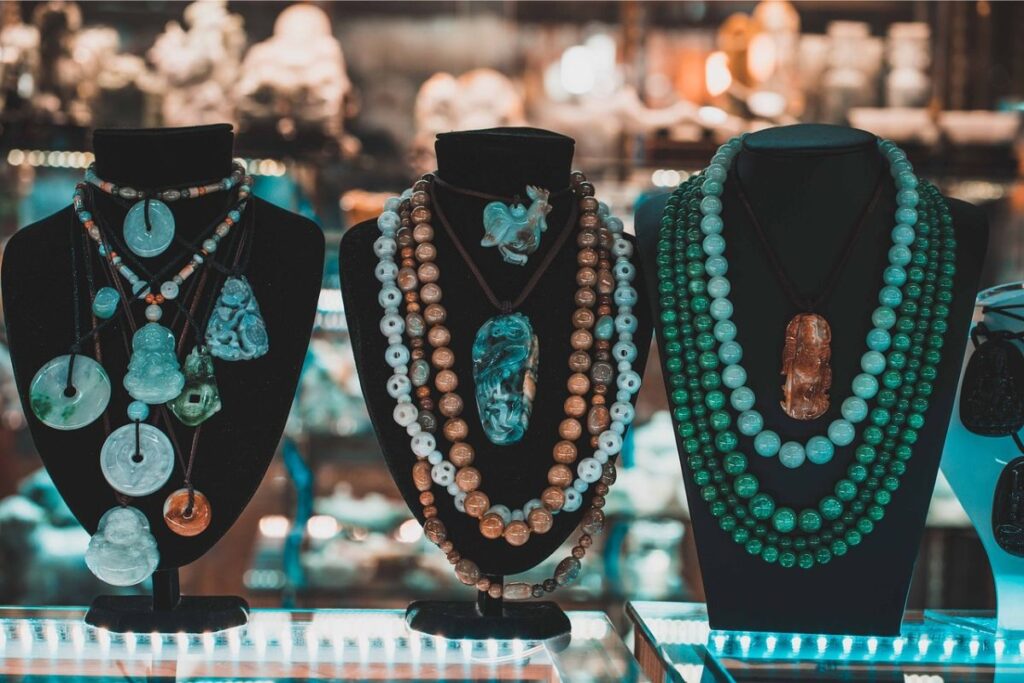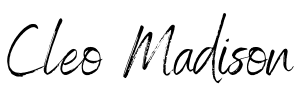Once revered for its mystical properties and status as a symbol of purity, protection, and nobility, jade has gracefully transitioned into the modern fashion world.
Today, it is not merely a relic of the past but a vibrant and versatile material that adorns contemporary designs.
This article explores the fascinating journey of jade, from traditional jewelry pieces that echo centuries of history to innovative fashion accessories that resonate with today’s aesthetics.
The Historical Significance of Jade in Fashion

Image by Minh Huỳnh from Pixabay
To understand the value of jade in the present fashion scene, let us first explore how jade became a fashion piece.
In ancient China, jade symbolized power, status, and spiritual purity. Emperors and nobles adorned themselves with intricately carved jade ornaments, believing the stone had protective qualities.
Jade artifacts, such as bi disks and cong tubes, were also used in rituals and burials, signifying the noble status of the deceased and ensuring their safe passage to the afterlife.
In Mesoamerica, civilizations like the Olmecs, Mayans, and Aztecs similarly prized jade for its rarity and beauty.
They crafted elaborate masks, jewelry, and ceremonial items from jade, often associating the stone with gods and spiritual beliefs.
They linked the vibrant green hue with maize, symbolizing life and fertility.
Jade’s Appeal in Modern Accessories
This gemstone has seamlessly transitioned into the contemporary fashion world, captivating designers and fashion enthusiasts alike. Here are the reasons for its appeal.
Versatility
One of the most compelling aspects of jade is its versatility. It effortlessly complements various fashion styles, from minimalist to extravagant, making it a favorite among modern designers.
Its natural beauty and range of colors, primarily its iconic green, allow designers to craft it into various accessories, including earrings, watches, and necklaces.
These pieces carry a sense of timelessness, bridging the gap between past and present.
In addition, the ability to incorporate jade into casual and formal wear underscores its enduring appeal, making it a staple in contemporary fashion.
A jade pendant necklace is one accessory that shows how this gemstone can seamlessly transition between casual and formal settings.
For example, you can pair a simple jade pendant on a leather cord with a plain white T-shirt and jeans for a casual look. The natural green hue of the jade adds a touch of elegance to an otherwise laid-back outfit.
The same jade pendant can create a more sophisticated look by removing the leather cord to add a fine gold or silver chain. Pairing this with a tailored suit or an elegant dress transforms the necklace into a statement piece.
Jade also suits any gender. Jade cufflinks, for example, offer a subtle yet sophisticated touch to formal attire for men, enhancing the elegance of a suit with its rich green hue and polished finish.
For women, jade can be incorporated into elegant earrings or necklaces, providing a timeless accessory that complements casual and formal outfits.
Sustainability and Ethical Considerations
Sustainability and ethical sourcing are increasingly important to consumers and designers today. Jade, often sourced responsibly, aligns well with these values.
The long-lasting nature of this gemstone ensures that jade accessories are durable, reducing the need for frequent replacements and supporting a more sustainable approach to fashion.
On top of that, many designers are now committed to eco-friendly practices, ensuring that jade is mined and crafted in ways that respect both the environment and the workers involved in its production.
Related Content: Top 6 Sustainable Clothing Materials To Look Out For
The Fusion of Traditional Motifs with Modern Aesthetics
This gemstone is appealing because it allows designers to blend traditional motifs with modern aesthetics.
This creative amalgamation enables designers to pay homage to the rich cultural heritage of jade while infusing contemporary style into their pieces, making jade accessories both meaningful and fashionable.
Traditional jade carvings often feature motifs like dragons, phoenixes, and floral patterns, each carrying deep symbolic meanings.
Dragons, for instance, symbolize power and protection, while phoenixes represent renewal and immortality.
These motifs are not just decorative; they tell stories and embody the beliefs and values of ancient civilizations.
In the modern fashion landscape, designers are increasingly drawn to these traditional motifs, reinterpreting them through a contemporary lens.
It involves incorporating classic designs into sleek, minimalist forms or juxtaposing intricate carvings with modern materials such as metals and leather.
The result is a harmonious blend that retains the essence of the past while appealing to modern tastes.
For example, a pendant might feature a delicately carved dragon, but the overall design is sleek and minimal, with clean lines and a polished finish that speaks to contemporary aesthetics.
Similarly, jade bracelets might combine traditional motifs with modern metalwork, creating pieces that are both timeless and trendy.
Final Thoughts
Jade’s journey from ancient times to contemporary fashion epitomizes its status as a timeless gemstone.
Its versatility allows it to complement a wide range of styles, from minimalist to extravagant, and its ethical sourcing aligns with the sustainability values of the modern shopper.
In addition, this gemstone is a practical choice in men’s and women’s fashion, allowing individuals to get creative with how they incorporate it into casual or formal wear.
